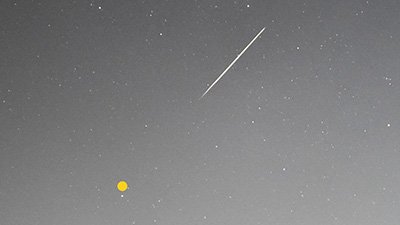Cepheid Confusion
Is “distant starlight” as distant as we think?
News Source
- ScienceNOW: “Objects in the Telescope May Be Closer Than They Appear”
One of the leading creationist research questions concerns distant starlight: concisely put, how could light from far-off stars reach earth in the 6,000 years since creation? While a number of solutions have been proposed (such as the recent paper Anisotropic Synchrony Convention—A Solution to the Distant Starlight Problem), creationist cosmological models—like those of cosmic evolutionists—are still subject to ongoing development.
Astronomers have determined the distances of far-off galaxies by studying a class of stars known as cepheids.
Research reported this week puts an interesting twist in both research programs. A team presenting at a meeting of the American Astronomical Society discussed evidence that astronomers’ methods for measuring the distance of certain stars are based on problematic assumptions. Specifically, astronomers have determined the distances of far-off galaxies by studying a class of stars known as cepheids. These stars brighten and dim regularly, and that fluctuation has been used to gauge those stars’ distances from earth. Therefore watching the fluctuation of cepheid brightness in distant galaxies helps astronomers estimate just how far those galaxies’ are from earth.
Unfortunately, new observations from NASA’s Spitzer Space Telescope have turned up unexpected behavior in cepheids. Some, including the archetypical Delta Cephei, are surrounded by nebulae that distort our measurements. However, correcting for this distortion is theoretically possible.
Granted, this discovery does not mean that distant stars are close enough to resolve the riddle of distant starlight. (Indeed, life on earth would be unviable were it so!) But creationists have good models accounting for why we see distant starlight so “soon” after creation—models that avoid problematic atheistic assumptions (e.g., the Copernican principle) and explain the divine origin of the cosmos.
Further Reading
For More Information: Get Answers
Remember, if you see a news story that might merit some attention, let us know about it! (Note: if the story originates from the Associated Press, FOX News, MSNBC, the New York Times, or another major national media outlet, we will most likely have already heard about it.) And thanks to all of our readers who have submitted great news tips to us. If you didn’t catch all the latest News to Know, why not take a look to see what you’ve missed?
(Please note that links will take you directly to the source. Answers in Genesis is not responsible for content on the websites to which we refer. For more information, please see our Privacy Policy.)

Answers in Genesis is an apologetics ministry, dedicated to helping Christians defend their faith and proclaim the good news of Jesus Christ.
- Customer Service 800.778.3390
- © 2024 Answers in Genesis




